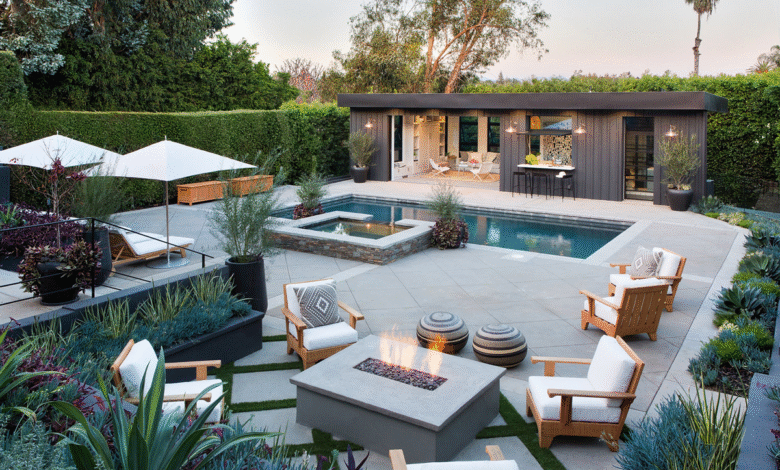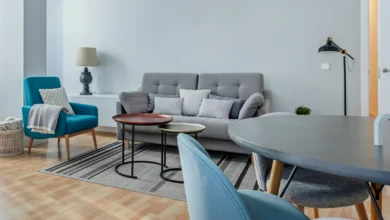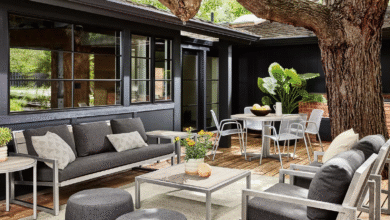Transforming Your Backyard into a Relaxing Retreat: Tips for Designing the Perfect Deck Space

Key Takeaways
- Backyard decks can increase both the comfort and value of outdoor living areas.
- Thoughtful design choices make a big difference in function and enjoyment.
- Materials, layout, and accessories all contribute to a welcoming backyard retreat.
- Inspiration and research can point to practical, safe, and beautiful options for every yard.
Benefits of a Backyard Deck
Imagine stepping outside your back door and entering a space that feels like a private retreat designed for everything from morning routines to evening gatherings. A backyard deck is more than just a flat surface; it’s a lifestyle upgrade that fosters relaxation, social connection, and an appreciation for the outdoors. Building a deck doesn’t just add valuable square footage—it transforms the way you enjoy your home, potentially making it the favorite place for friends and family to gather.
Investing in well-planned deck construction in Oakton, VA, or any area can offer tangible rewards. It’s widely reported that outdoor living spaces boost a home’s value. But the appeal isn’t only financial—decks enhance curb appeal, provide a practical solution for connecting indoor and outdoor zones, and become the core for making memories. It’s not uncommon for a deck to serve as the spot for graduations, birthday parties, or simply an evening escape in the fresh air.
Planning Your Deck Space
Thoughtful deck planning is what sets exceptional outdoor spaces apart. A deck that’s designed around how people truly live tends to see the most use, not just during sunny weekends but throughout the year. Begin your planning by clarifying your priorities. Will you be grilling regularly? Do you need space for dining outdoors, sunbathing, or perhaps a hot tub? Listing out your must-haves and nice-to-haves at the start will help keep your project aligned with your lifestyle.
Effective planning involves visualizing how the whole deck flows organically with both the home and landscape. Consider the traffic flow between the kitchen, central seating area, and backyard. Where does shade naturally fall during the day? Is privacy from neighbors necessary, or do you want to preserve a particular view? As HGTV recommends, considering key elements such as function, traffic patterns, and access points can help create a more seamless design. Utilizing online deck planners or even simple scale drawings can clarify the best locations for stairs, entrances, and outdoor kitchens. Even jotting down the view lines from inside your home to the deck and from the deck to the yard can shape decisions for maximum year-round enjoyment.
Choosing the Right Materials
Material selection extends beyond aesthetics—it determines how your deck will perform over time. Wood, from pressure-treated pine to exotic hardwoods, offers a timeless aesthetic and comfortable underfoot warmth, although it requires regular maintenance, such as sealing, staining, or painting, every few years. Composite materials, on the other hand, have gained popularity among those seeking an easy-care solution. These boards often blend recycled plastics and wood fibers, replicating natural grain but with fading, splintering, and rotting kept to a minimum.
Consider factors such as your local climate, expected wear and tear, and personal style preferences when selecting a material. Composite decking, as highlighted in recent expert features on deck materials, comes in a range of colors and textures, letting you match your aesthetic perfectly. For those drawn to sustainability, look for options that include recycled content and certifications for responsible forestry. The right material can impact not only the look and feel but also future costs and the amount of time you spend on upkeep.
Deck Layouts and Zoning
A deck’s layout heavily influences how you interact with the space. Zoning essentially means carving up the deck into “rooms”—separate zones designed for lounging, dining, or play. Multi-level decks work wonders when yards have natural slopes or if you want to create distinct spaces, like an upper sun deck and a cozy fireside lounge below. Single-level decks remain the go-to choice for accessibility and simplicity, making them easy to navigate for all age groups.
Clever use of built-in features, such as benches, planter boxes, or pergolas, can add structure and interest to each zone. Dining areas can be defined with overhead string lights or a pergola, while a tucked-away corner can be transformed into a reading nook with a couple of lounge chairs and tall plants for added privacy. Color variation, different wood grains, or creative railing choices can help distinguish one activity space from another, ensuring the deck feels cohesive but never cluttered.
Safety and Building Codes
Safety always comes first in outdoor construction. Local building codes exist to protect homeowners, visitors, and even potential future buyers. Most regions establish requirements for structural integrity, guardrail height, stair dimensions, and the spacing between decking boards to prevent slips and falls. Lighting is essential, too—LED path lights, step lighting, and solar fixtures extend safe, enjoyable use into the night.
Before you or a contractor breaks ground, reach out to your municipal building department or browse their website for current deck regulations. Sometimes setbacks, height restrictions, or special permits are also needed. Addressing all this upfront may seem detail-heavy, but it pays off by delivering peace of mind and a space everyone can enjoy with confidence for years to come.
Personalizing Your Retreat
Transforming a deck into a true retreat involves incorporating details that reflect your style. The color of the decking, accents such as railings or post caps, and even the selection of hardware can transform a standard space into a genuine design statement. Outdoor lighting options now range from discreet in-deck lights to dramatic lanterns and festive strings—perfect for setting the mood.
Architectural elements, such as privacy screens, trellises with climbing vines, or even outdoor drapes, help carve out intimate, private zones within an open-air setting. Personalized décor, weatherproof artwork, and meaningful textiles, such as outdoor rugs or cushions, make the space feel as curated as your interior. A well-personalized deck not only looks beautiful but also invites frequent, long-lasting use.
Outdoor Accessories and Furnishings
Furniture and accessories help define how comfortable and flexible your space will be. Modern outdoor furniture is designed to withstand the elements, featuring water-resistant cushions, rust-proof frames, and fade-resistant fabrics. Sectionals, lounge chairs, and sturdy tables create a welcoming sense of luxury, while multi-purpose pieces—such as benches with built-in storage—maximize utility in smaller spaces.
Accessories take comfort to the next level: think shade sails or retractable canopies for hot days or fire pits and patio heaters for chilly evenings. Lanterns, planters brimming with seasonal flowers, vertical herb gardens near grills, and even small water features can add ambiance and function. The best decks allow you to adapt—move things around for parties, find a sunny reading spot, or create a nap zone under the stars.
Sustainable and Low-Maintenance Options
Today’s deck designs offer a wealth of environmentally responsible and hassle-free options—a game-changer for busy households. Many composite products are made with a substantial percentage of recycled plastics and wood fiber, keeping literal tons out of landfills. Wood options, such as cedar or pressure-treated pine, can be sourced from responsibly managed forests, often certified by the Forest Stewardship Council (FSC).
Minimizing maintenance often means more time spent enjoying your outdoor haven.




